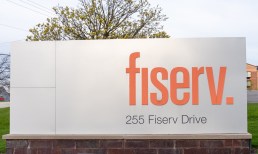With the talc lawsuit and settlement overshadowing first-quarter earnings, reported Tuesday (April 18), executives said J&J’s strong Q1 results were in large part “driven by global strategic price increases across all franchises.”
Regarding the so-called “tripledemic” of early 2023 where lingering COVID cases mingled with other seasonal respiratory and flu illnesses, Vice President for Investor Relations Jessica Moore said, “Volume growth in OTC was due to an exceptionally strong cough cold and flu season, most pronounced in Europe, coupled with one-time retailer restocking primarily in the U.S. related to low inventory levels due to tripledemic demand.”
She added that the Skin-Health-Beauty category “delivered double-digit growth driven by price action lapping prior year supply constraints and current quarter restocking as well as strong Neutrogena and AVEENO® e-commerce and club channel performance and new product innovations.”
The company also pointed to strong sales of over the counter (OTC) brands including Tylenol, Motrin and Imodium, as well as smoking cessation products and baby care products.
Moore said global growth of 9.3% in contact lenses and other consumer products “reflects continued penetration of our Acuvue Oasis one day family of products, including the recent launch of Acuvue Oasis Max one day, strong commercial execution, and strategic price actions. Growth in contact lens and US surgical vision was tempered by continued supply challenges.”
Advertisement: Scroll to Continue
Looking Ahead
On the future of J&J, EVP and CFO Joseph Wolk said, “We remain focused on the successful separation of our consumer health business, Kenvue, which will position both companies to be more agile, focused, and competitive. We’re also expecting a number of pipeline advancements that will provide increased confidence in our pharmaceutical and med-tech businesses.”
He added, “We remain on track to complete the separation of this business in 2023 assuming accommodative market conditions. Since the start of the year, we have been operating our consumer health business as a company within a company,” noting J&J has filed documents with the SEC ahead of a planned initial public offering (IPO) for Kenvue.
On the med-tech side of the business, where robotic surgery is playing a larger role, Wolk said, “We expect continued competitive growth fueled by increased procedures and commercial uptake of recently launched products. We anticipate relatively stable procedure volumes and healthcare staffing levels for the remainder of the year, with normal seasonality.”
Commenting on the press into surgical procedures that have seen a comeback from pandemic lows, J&J EVP and Worldwide Chairman, MedTech Ashley McEvoy said, “I would say that we are in all things robotics.”
Regarding J&J’s VELYS Robotic-Assisted Solution, McEvoy said, “We just received CE mark [approval], positioning it for expansion to more global markets. Right now, we’re in five, but I’m pleased to say that it’s now the fastest-growing knee robotic system in the United States. We’ve completed over 20,000 procedures, and we’re taking this systems approach to our business in hips to shoulders and spine.”




